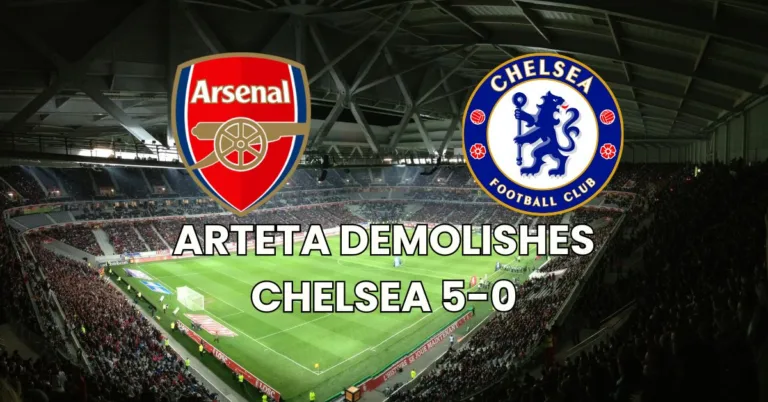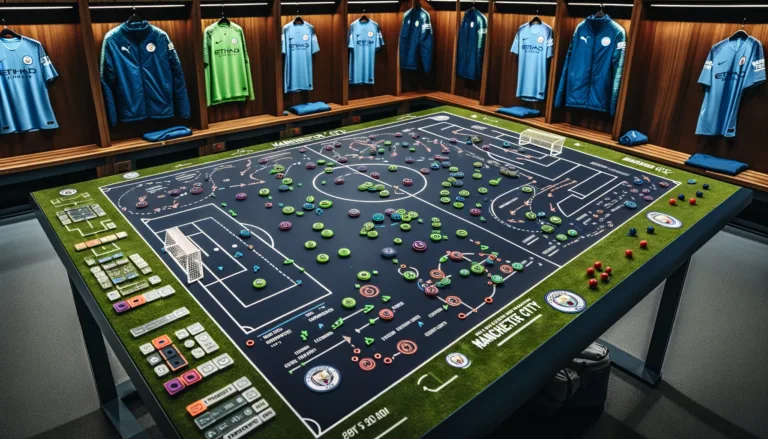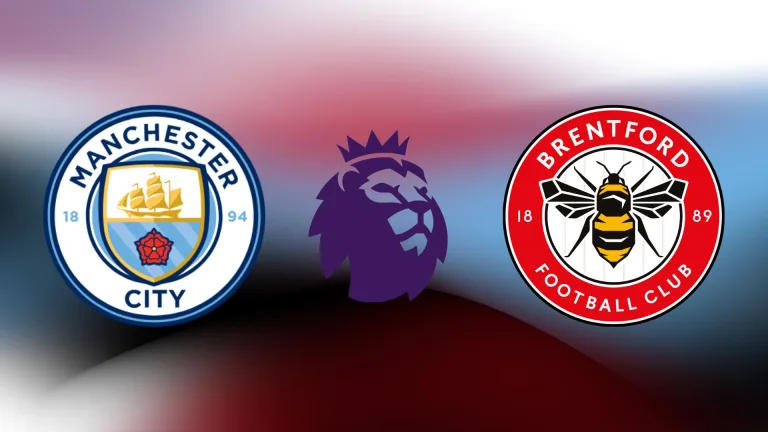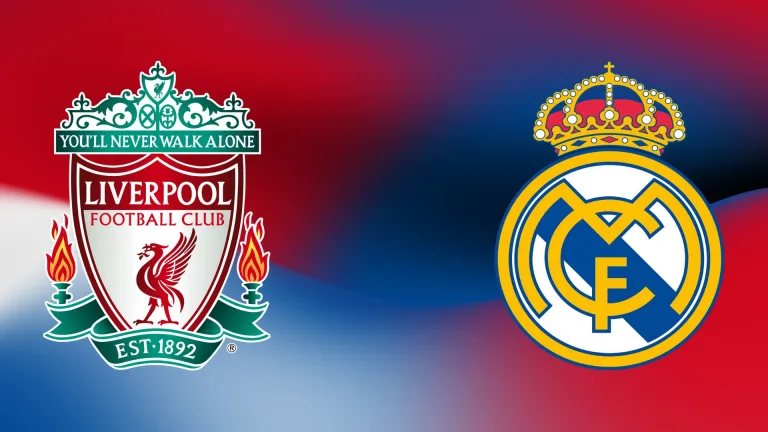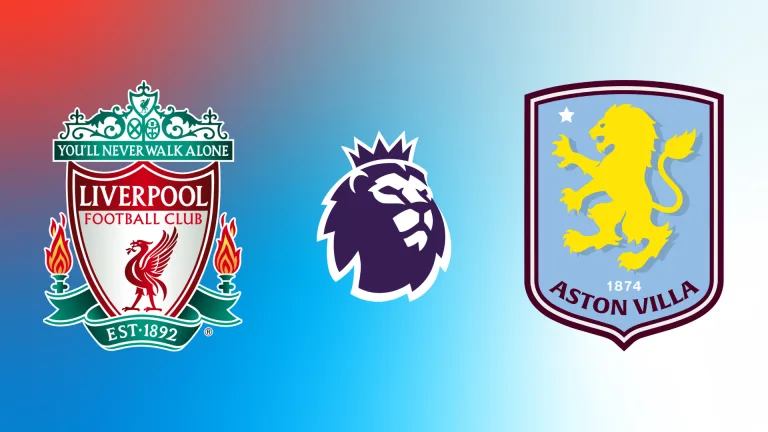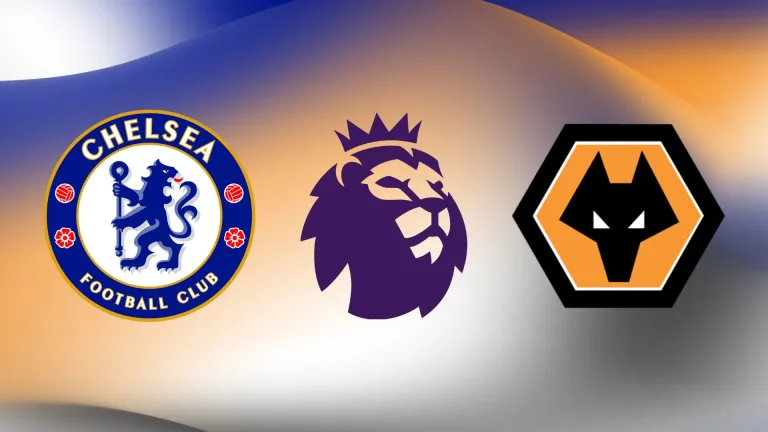Tactical Analysis: Why Conor Gallagher Didn’t Fit into Enzo Maresca’s Chelsea System
Conor Gallagher’s recent switch from Chelsea to Atlético Madrid has everyone talking. While there are a few reasons behind his move, a big one is that he didn’t quite fit into Enzo Maresca’s game plan at Chelsea.
Maresca, who’s known for his possession-heavy style influenced by Pep Guardiola, needed midfielders who are great with the ball and stick to their positions. Gallagher, on the other hand, is all about high energy, making runs, and getting stuck in, traits that didn’t really match up with what Maresca was looking for.
In this article, we’ll look at why Gallagher struggled to fit into Maresca’s system at Chelsea.
Understanding Enzo Maresca’s Tactical System
Enzo Maresca’s style of coaching is all about strategy and positioning, much like a game of chess (in his own words). He believes in setting up his team in a way that’s very organised and methodical. Maresca likes to build up play from the back. He uses short, precise passes to get around high-pressure situations. The goalkeeper often joins in to help create extra support at the back so a ball-playing keeper is very important in Maresca’s system.
He usually sets up his teams in a 4-2-3-1 or a 4-3-3 formation. In this system, the full-backs might move inside to support the midfield forming the classic box-midfield, leaving a back line of three players, plus the goalkeeper sometimes being the additional fourth man.
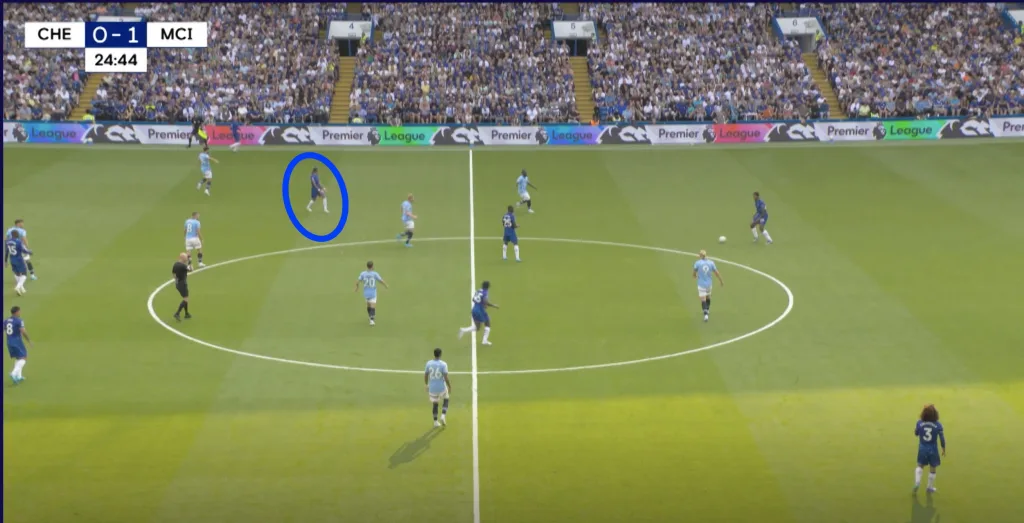
In defense, Maresca’s teams press high up the pitch to win the ball back quickly. When they can’t press, they drop into a solid defensive shape, usually something like a 4-4-2. They aim to keep the opposition from easily switching play and try to regain possession as fast as possible.
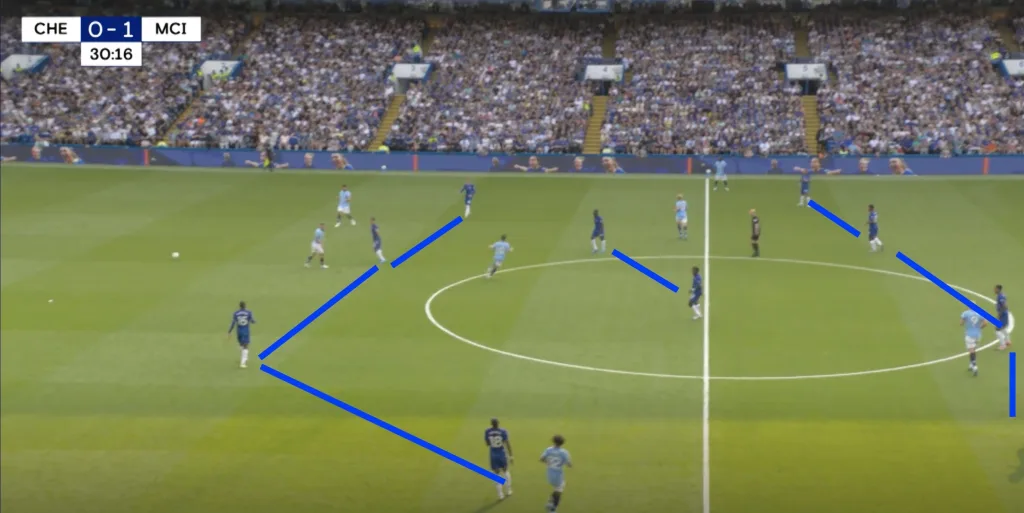
Overall, Maresca’s style is about being very organized and strategic. His approach focuses on controlled build-up play, precise positioning, and making the most of every chance to win the ball back.
Conor Gallagher‘s Player Profile
Gallagher is known for his high-energy game, which is all about pressing hard and making quick runs. He’s great at closing down opponents quickly and winning the ball back high up the pitch. This makes him really useful in situations where the team needs to recover possession fast and push for a counter-attack. His energy and quick reactions are key for turning defense into offence.
Gallagher also loves to make dynamic, forward runs. He often charges into the box late in the game and tries to find spaces between defenders. This makes him a real threat going forward and adds a lot of energy to the midfield. He can play in different midfield roles, whether that’s pushing up as an attacking midfielder or covering more ground as a box-to-box player.
His style is pretty direct. He prefers quick, aggressive actions rather than holding onto the ball for a long time. This suits counter-attacking football well, where speed and direct play are crucial. However, this approach can clash with systems that focus on keeping possession and building up play slowly.
Defensively, Gallagher’s constant pressing and ball recovery are important. He helps his team by winning back the ball and setting up attacking plays. On the attack, his runs into the box and forward movement create more chances and add excitement to the game.
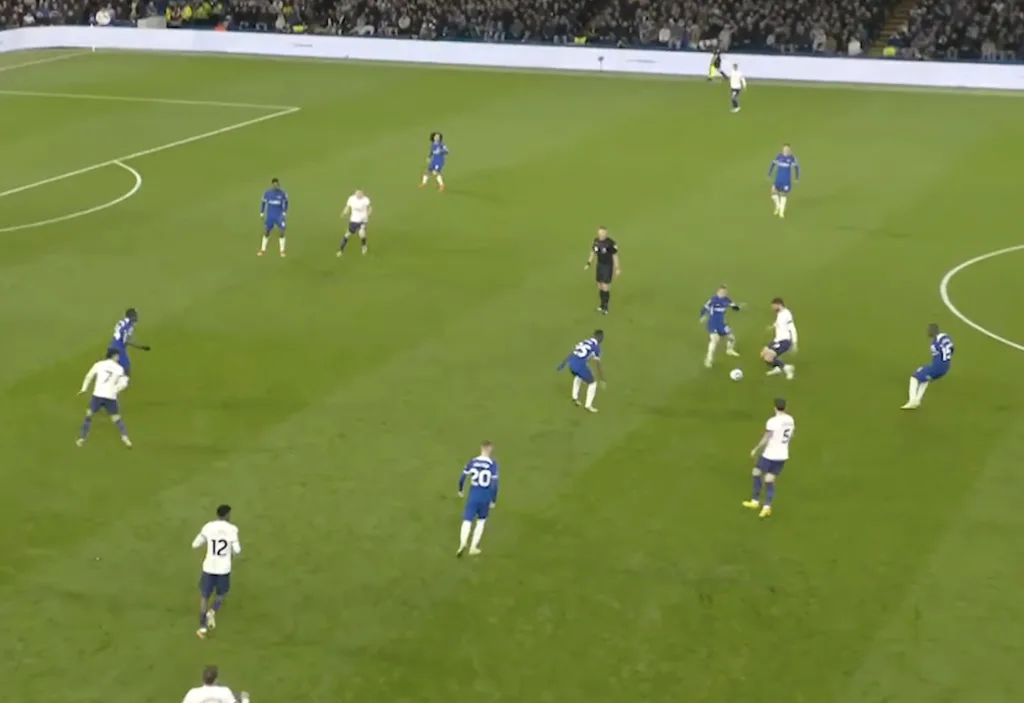
Tactical Misalignment, Statistics and Numbers
When you look at Conor Gallagher’s playing style and Enzo Maresca’s tactical approach, it’s clear why they didn’t quite fit together. Their differences in style led to a mismatch in how the team wanted to play versus how Gallagher operates best.
Possession vs. Dynamism
Gallagher’s game is all about energy and directness. He thrives on pressing hard and making quick, aggressive runs. However, Maresca’s system is built around controlling possession and maintaining a structured build-up from the back.
Maresca needs midfielders who are comfortable keeping the ball, making precise passes, and helping to patiently build up play. Gallagher’s style, which focuses on quick transitions and forward movement, doesn’t always mesh well with this need for steady ball retention. While Gallagher’s dynamism is great for counter-attacks and creating fast opportunities, it doesn’t always fit into a system that values holding onto the ball and building play slowly.
Just by looking at Conor Gallagher’s scouting report on how he compares to other attacking midfielders, we can see a clear picture. Tackle and progress the ball and a high work rate are the trademarks of Gallagher.
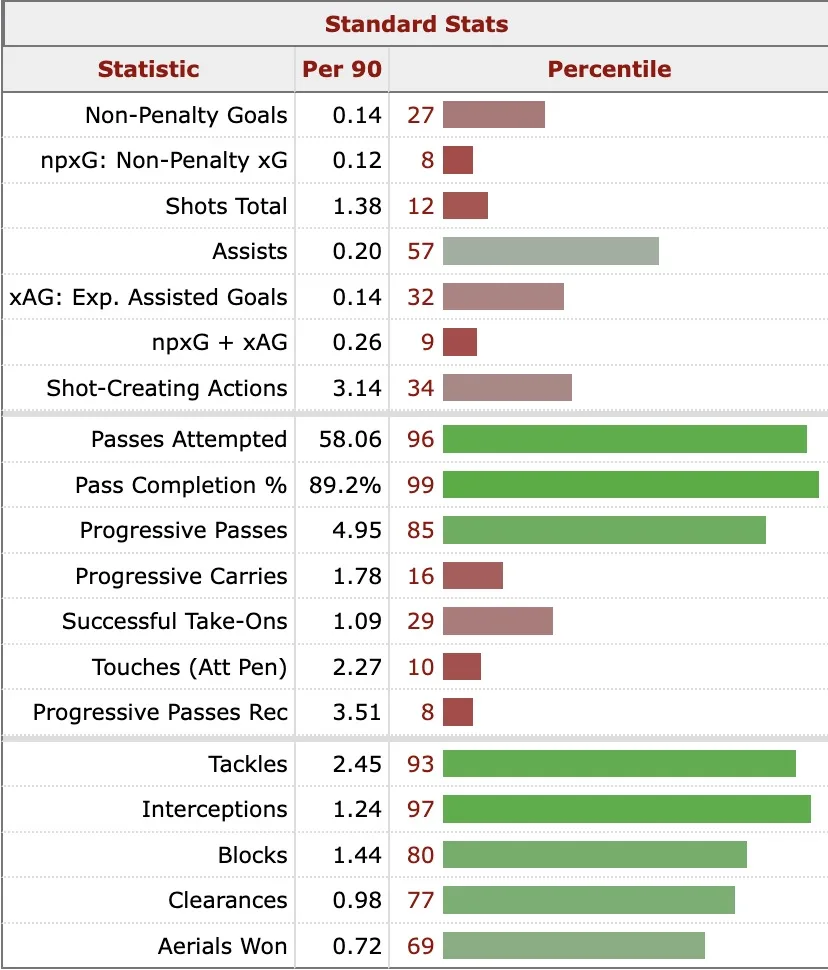
Positional Discipline vs. Free Roaming
Gallagher is known for his tendency to roam and cover a lot of ground. He’s constantly moving, pressing, and making runs, which is fantastic for dynamic play and disrupting opponents. But Maresca’s system requires a lot of positional discipline.
Players need to stay in specific areas to keep the team’s shape and ensure smooth ball circulation. Gallagher’s roaming nature can sometimes lead to gaps or disrupt the team’s structure, making it harder to maintain the fluidity Maresca wants.
This kind of freedom can be a bit of a problem in a system that needs players to be in the right place at the right time. Of course, this is not me trying to bash the positional play philosophy, or saying that it kills creativity. As Pep himself says, creating a system helps players to express themselves and create inside the system. The key here being inside the system.
The stats illustrate this well. After the first third of the 2023/24 Premier League season, Conor Gallagher ranked 5th in distance covered on the pitch, with an impressive 134.6 km. In the game against Crystal Palace that season, Gallagher ran 13 km.

Ball Distribution
The way Gallagher distributes the ball is another point of contrast. He tends to play more direct and isn’t as focused on the short, precise passing that Maresca’s system relies on.
Maresca’s approach involves a lot of quick, short passes to move the ball around and control the game. Gallagher’s passing style, which can be more about quick, long balls or direct play, doesn’t always fit this requirement. In a system where ball circulation and quick, accurate passes are key, Gallagher’s distribution might not always meet the expectations.
Comparing to Enzo Fernander, a player who would fit better in Maresca’s system (although his debut against Manchester City under Maresca hasn’t necessarily been a masterclass), we can see that Fernandez had a total passing distance of 911 yards and a progressive passing distance of 263 yards per 90 minutes compared to Gallagher’s 768.2 and 171 yards.
Conclusions
In summary, Conor Gallagher’s struggle to fit into Enzo Maresca’s system at Chelsea comes down to a fundamental mismatch in playing style. Gallagher’s strengths lie in his dynamic, high-energy approach, which focuses on pressing, quick transitions, and direct play. Meanwhile, Maresca’s system prioritizes possession, positional discipline, and controlled ball circulation, which doesn’t align with Gallagher’s natural game.
This tactical misalignment has significant implications for Gallagher’s future under Maresca. It raises questions about whether he could find a suitable role in this system or if a transfer, like his recent move to Atlético Madrid, was inevitable. If Gallagher had stayed, adapting to a more specialized and controlled role might have been possible, but it would likely have limited what makes him such a unique and effective player.
The situation underscores the importance of tactical fit in modern football. Even highly talented players like Gallagher can struggle to make an impact if they’re in a system that doesn’t suit their strengths. As football continues to evolve, finding the right environment where a player’s abilities can truly shine is crucial for both the player’s success and the team’s overall performance.

